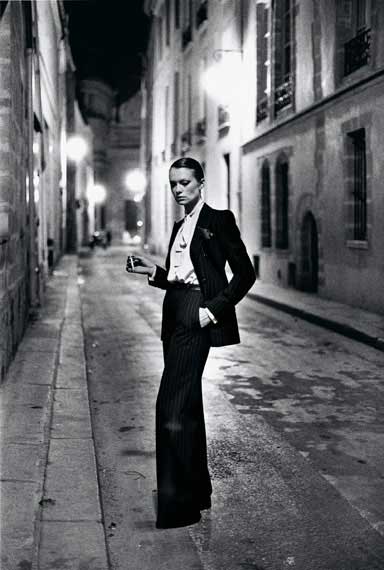The exhibition presents over 200 images by Helmut Newton, one of the most important and famous photographers of the twentieth century.
It collects together images from “White Women”, “Sleepless Nights”, and “Big Nudes”, the first three books by Newton published at the end of the 1970s, books that are today considered legendary and which were the only ones to be edited by Newton himself.
When selecting the photos, Newton interspersed a sequence, one next to another, of shots that had been commissioned with those he had made for himself, thus constructing a narrative which was a search for style, for the discovery of elegant gestures underpinned by the existence of a further reality, of something that it is up to the viewer to interpret.
For “White Women”, published in 1976, Newton chose 84 images (44 in color and 40 in black and white) and, for the first time, introduced nudity and eroticism into fashion photography. Balanced between art and fashion, the shots are mainly of female nudes through which he presented contemporary fashion. These visions had their origins in the history of art, in particular in the Maja desnuda and the Maja vestida by Goya, works now in the Prado, Madrid. Newton’s provocation with his introduction of radical nudity in fashion photography was then taken up by many other photographers and directors and was to remain the symbol of his personal artistic output.

Once again it is women, with their bodies and clothes, that are at the centre of “Sleepless Nights”, published in 1978. In this case, however, Newton began to explore a vision that transformed the images from fashion photos into portraits, and from portraits into reportage, almost as though they were crime scenes. This was a more retrospective book which contained 71 photos (33 in color and 38 in black and white) made for various magazines (Vogue included) and it was the one that defined his style and made it into an icon of fashion photography. The subjects, usually partly nude models wearing orthopedic corsets, women harnessed to leather saddles, as well as manikins latched to real people for the most adventurous love photos, were systematically portrayed outside the studio and were often in provocative poses, suggesting the use of fashion photography as nothing more than a pretext for creating something far different and far more personal. With “Big Nudes” published in 1981, Newton arrived at his position of a leader in the history of images in the second half of the twentieth century. The 49 black and white shots marked the beginning a new size for the photography of humans: those gigantic photos that, from this moment on, were to enter galleries and museums throughout the world. In the artist’s autobiography, published in 2004, Newton explained how the full-length nudes photographed in the studio with a medium sized camera, which he used for producing the full-scale prints of “Big Nudes”, had been inspired by the posters diffused by the German police in their search for members of the RAF (Rote Armee Fraktion) terrorist group.
PAN Palazzo delle Arti Napoli
25 Feb – 18 Jun 2017
Palazzo Roccella, Via dei Mille, 60
Napoli






